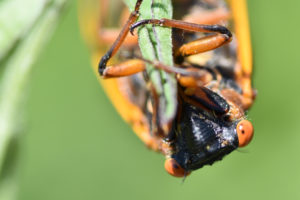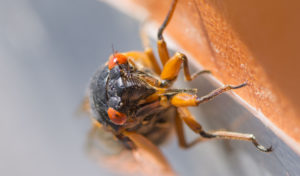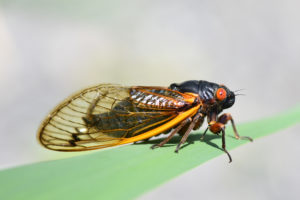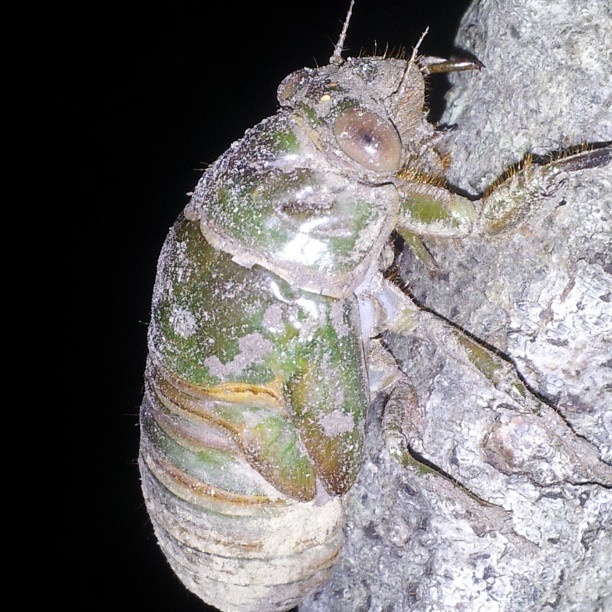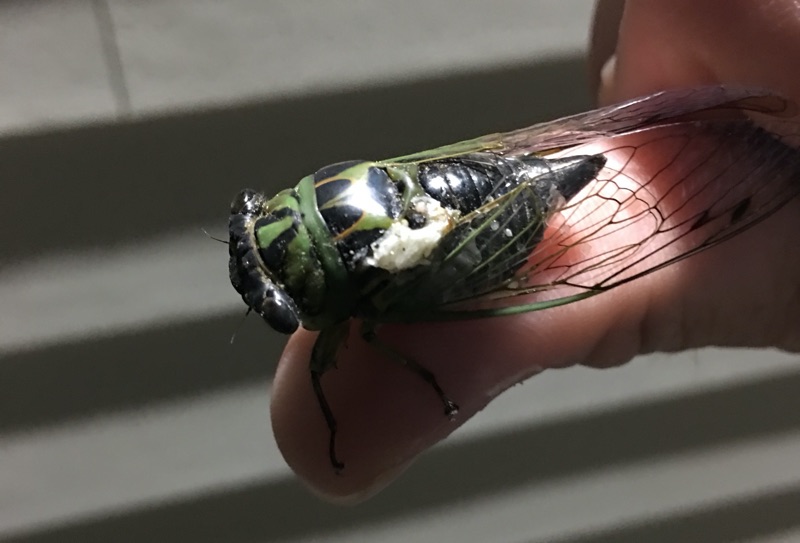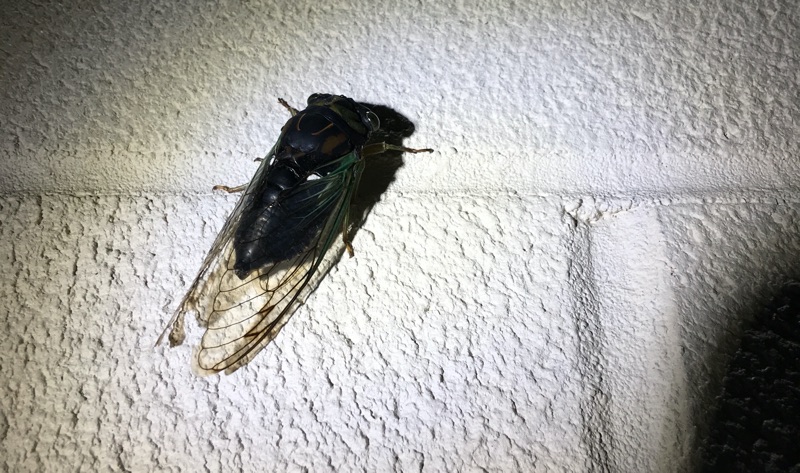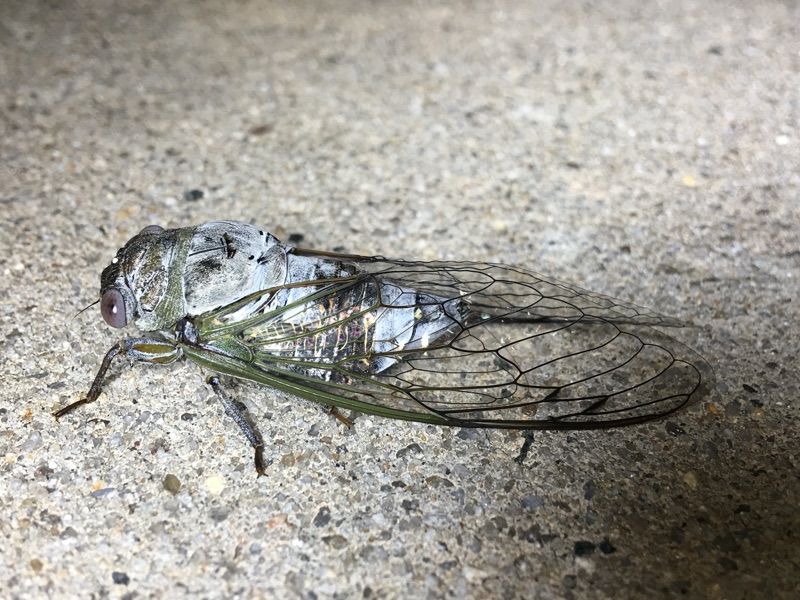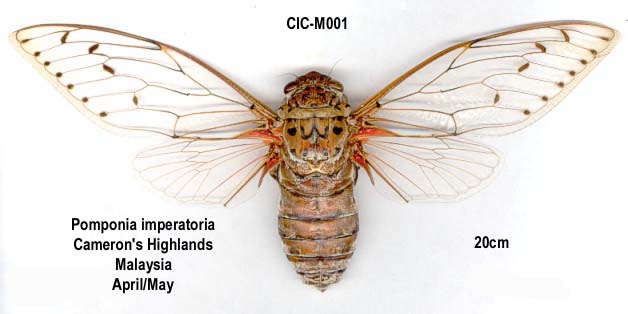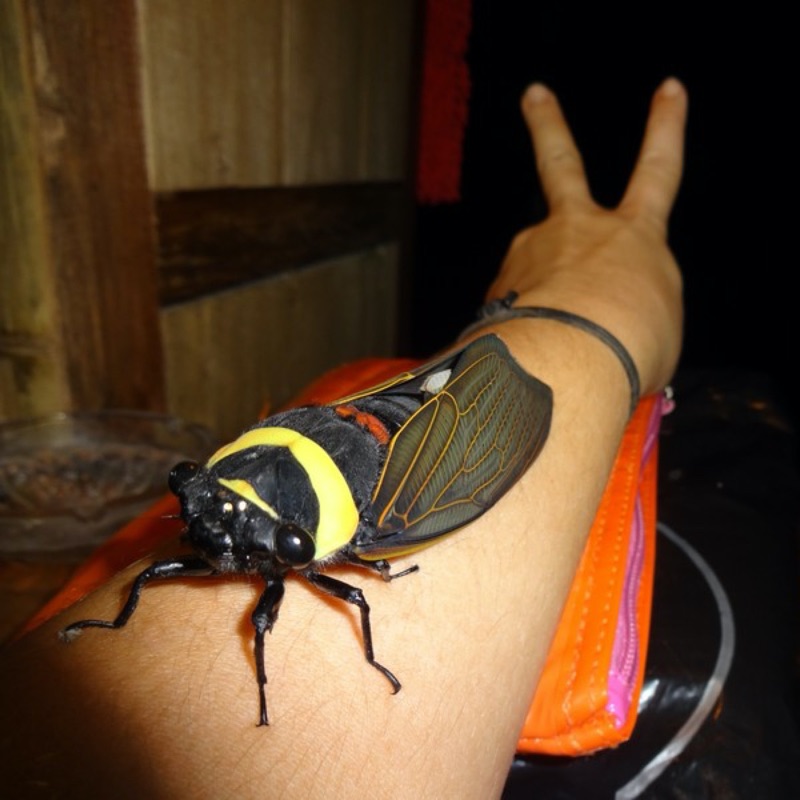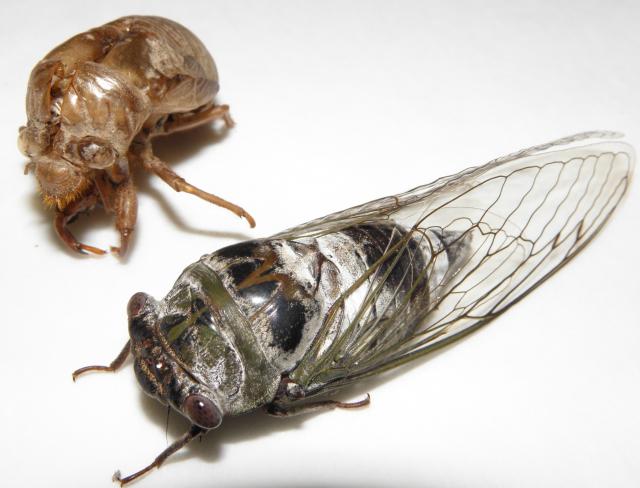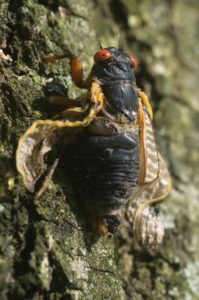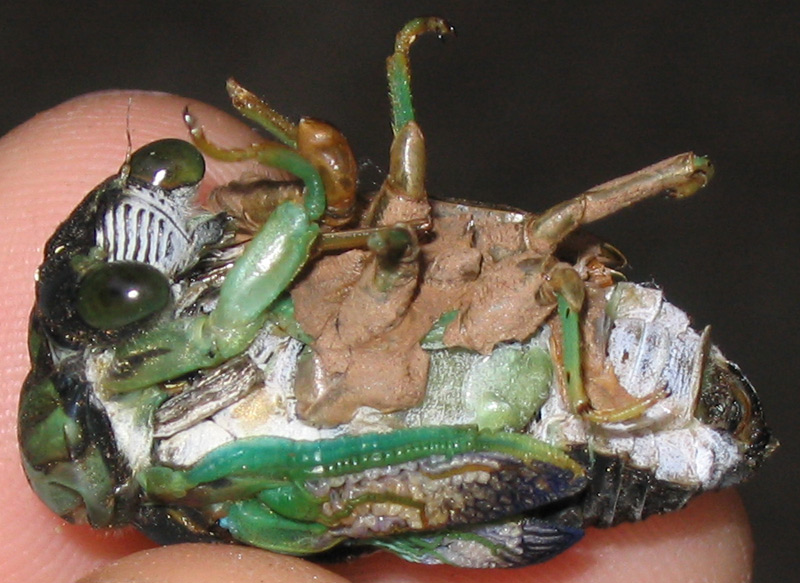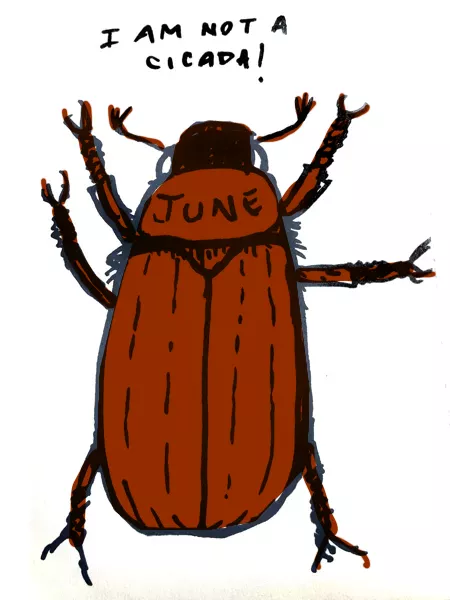Which cicada has the longest life cycle?
The most famous cicadas — North American periodical cicadas — typically live 17 or 13 years. These cicadas only represent about 0.2% of all cicadas, most of which live shorter lives.
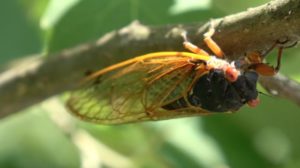
Magicicada septendecim cicadas live 17 years.
Cicada Life Spans:
Cicada life spans (life cycle length) vary from one year to as many as 21, depending on the species. Cicadas like Myopsalta crucifera and Parnkalla muelleri of Australia have one-year life cycles6. Magicicada septendecim, M. cassini and M. septendecula, of the United States, can live as long as 21 years (read What are Stragglers?).
Some life spans for well-known cicadas:
North America:
- Magicicada septendecim, M. cassini and, M. septendecula: 13 to 2210, but typically 17.
- Magicicada tredecim, M. neotredecim, M. tredecassini, and M. tredecula: 9 to 17, but typically 13.
- Diceroprocta apache: 2-5, but typically 3-4 years1.
- Neotibicen and Megatibicen genera: 2-7 years2.
- Okanagana rimosa: 9 years3.
- Okanagana synodica: possibly 17 to 19 years.5
Australia:
- Cyclochila australasiae: 6-7. 6
India:
- Chremistica ribhoi: 4. 7
Japan:
- Hyalessa maculaticollis: 2-5, but typically 3. 8
New Zealand:
- Amphipsalta zealandica: 3-4, but typically 4. 9
Table 3 of the paper Genome Expansion via Lineage Splitting and Genome Reduction in the Cicada Endosymbiont Hodgkinia (Campbell et al, 2015) contains a large table of cicada life cycle lengths.
Annual, Periodical, or Protoperiodical
Most cicadas appear on an annual basis, meaning that every year adults will appear.
It is common for many species to be Protoperiodical as well, meaning that some years will see an abundance of adults, while other years there will be a limited number of that species. Okanagana rimosa, in particular, are Protoperiodical 9.
Some species, like the Magicicada species and Chremistica ribhoi, appear on a periodic basis, meaning that after a specific number of years almost all adults of the species will emerge.
Life Expectancy
Although many cicadas have long life cycles, not many of them make it to adulthood. Nymphal mortality of Magicicada can reach 98% in the first 2 years 4. Imagine if all those cicadas made it to adulthood. 50 times more cicadas! Unfortunately, that isn’t the case.
Magicicada is just one genus of cicadas (representing about 0.2% of all species), but I have to think that most cicadas, regardless of species, will never make it to adulthood.
How long do cicadas live as adults?
Short answer: about a month.
How long a cicada lives as an adult depends on the species, but the answer could be from a matter of seconds, if the cicada dies due to predation or an accident, to more than a month. Cicadas are primarily subterranean plant (mostly tree) parasites and only enter their above-ground, adult form to mate/reproduce.
A particular species of cicada, like Neotibicen tibicen tibicen, might appear to last for two or three months, because their song can be heard for that length of time, but that’s likely because they emerge over a month, not all on the same day, extending the length of time their species is present above ground.
No matter what the species, adult cicadas perish within a season or two, and do not live multiple years in their adult form, like other types of insects. They won’t try to move inside your house once winter approaches to find warmth and shelter.
References
1 Aaron R. Ellingson, Douglas C. Andersen and Boris C. Kondratieff (2002) Observations of the Larval Stages of Diceroprocta apache Davis (Homoptera: Tibicinidae), , Journal of the Kansas Entomological Society, Vol. 75, No. 4, pp. 283-289. Link.
2 Richard Fox, Tibicen spp, (2001) http://lanwebs.lander.edu/faculty/rsfox/invertebrates/tibicen.html
3 Soper RS, Delyzer AJ, & Smith LFR (1976) The genus Massospora entomopathogenic for cicadas. Part II. Biology of Massospora levispora and its host Okanagana rimosa, with notes on Massospora cicadina and the periodical cicadas. Ann. Entomol. Soc. Am. 69(1):89-95.
4 Karban R. 1984. Opposite density effects of nymphal and adult mortality for periodical cicadas. Ecology 65: 1656-61.
5 Campbell et al. 10.1073/pnas.1421386112.
6 Moulds MS (1990) Australian Cicadas (New South Wales University Press, Kensington, NSW, Australia).
7 Hajong SR & Yaakop S (2013) Chremistica ribhoi sp. n. (Hemiptera: Cicadidae) from North-East India and its mass emergence. Zootaxa 3702(5):493.
8 Logan DP, Rowe CA, & Maher BJ (2014) Life history of chorus cicada, an endemic pest of kiwifruit (Cicadidae: Homoptera). New Zealand Entomologist:1-11.
9 Kathy Williams & Chris Simon, The Ecology, Behavior, and Evolution of Periodical Cicadas, (1995), Annu.Rev. Entomol. 40:269-95.
10 David C. Marshall, John R. Cooley, and Kathy Hill, Developmental Plasticity of Life-Cycle Length in Thirteen-Year Periodical Cicadas (Hemiptera: Cicadidae), Ann. Entomol. Soc. Am. 104(3): 443Ã450 (2011)



